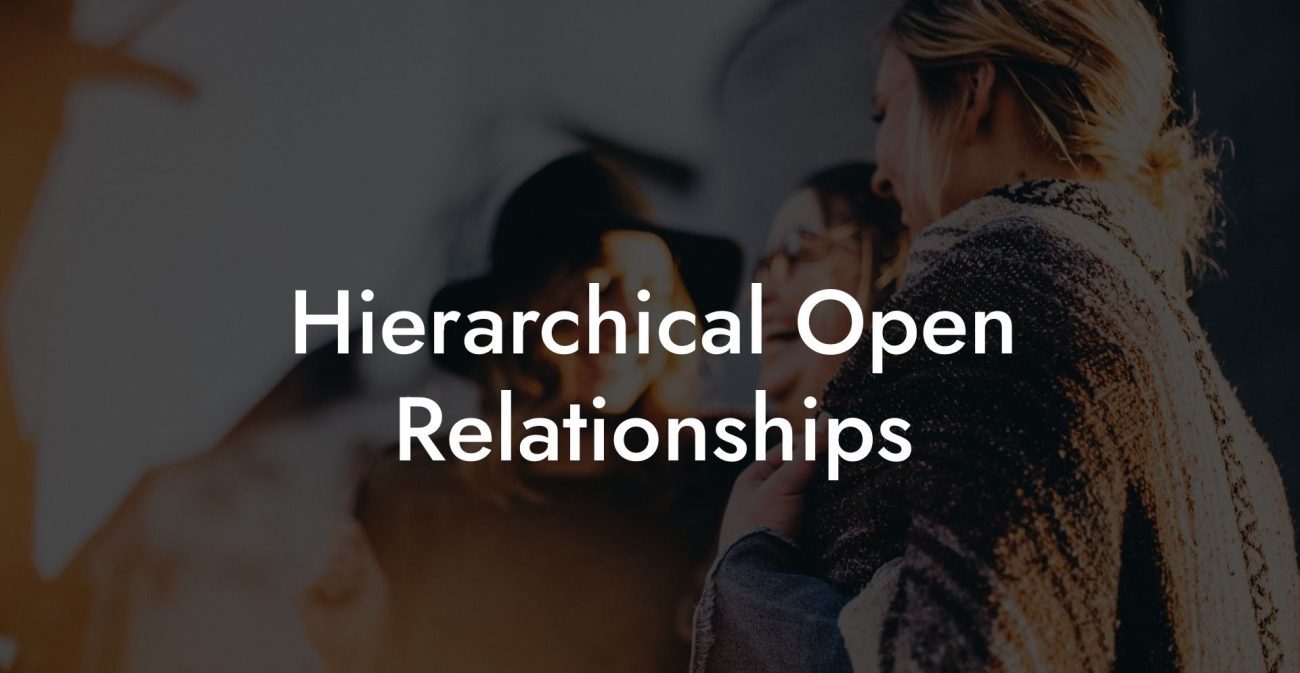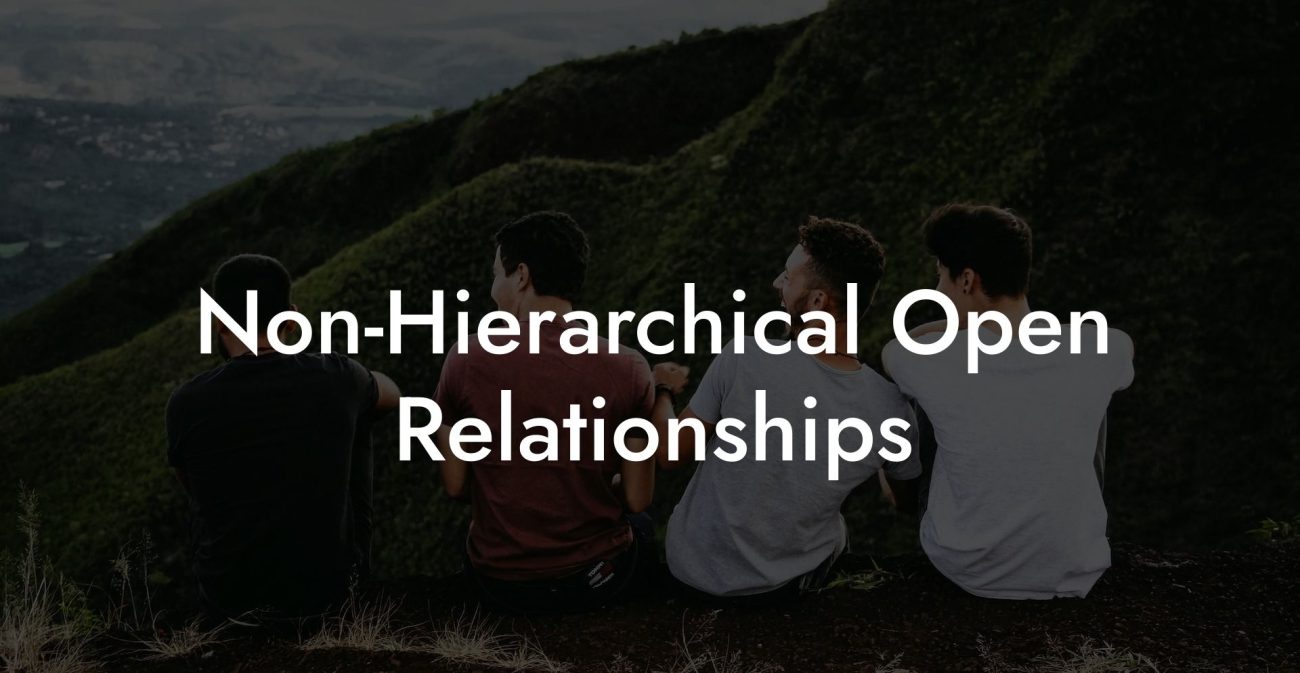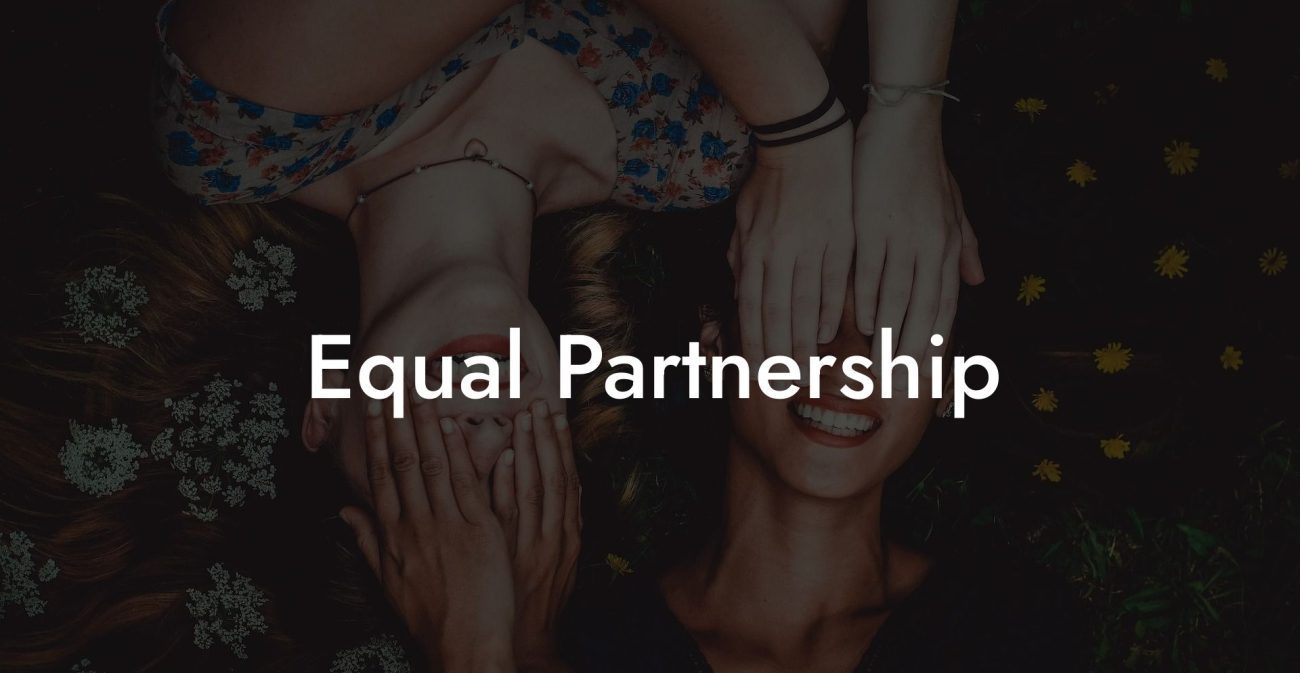How To Transition From Monogamy To Polyamory

Transitioning from monogamy to polyamory can be a transformative journey, one that challenges your long-held beliefs about love and commitment while opening up a world of new possibilities. If you’re questioning whether you can shift from a traditional, exclusive relationship model to one that embraces multiple, consensual connections, this comprehensive guide is for you. We’ll explore the differences between monogamy and polyamory, delve into the reasons behind such a transition, and offer practical, step-by-step strategies for navigating this change with clarity, confidence, and open communication.
Quick Links to Useful Sections
- Understanding Relationship Models: Monogamy vs. Polyamory
- Reasons for Transitioning from Monogamy to Polyamory
- Self-Reflection and Assessing Readiness
- Communicating With Your Partner
- Educating Yourself About Polyamory
- Setting New Boundaries and Expectations
- Practical Steps for Transitioning
- Dealing With Challenges and Emotional Hurdles
- Real-Life Experiences and Anecdotes
- Expert Insights: What Relationship Professionals Say
- FAQ: How to Transition From Monogamy to Polyamory
- Resources and Community Support
Understanding Relationship Models: Monogamy vs. Polyamory
To begin, it’s essential to understand the fundamental differences between monogamy and polyamory. Monogamy is the longstanding relationship model where two individuals commit exclusively to each other, sharing emotional and physical intimacy without external partners. This model is deeply rooted in cultural, social, and even legal norms in many parts of the world.
Polyamory, on the other hand, involves engaging in multiple romantic or sexual relationships simultaneously, with the full, informed consent of everyone involved. Rather than being viewed as a lack of commitment, polyamory is about expanding one’s capacity for love and connection. It is built on principles of ethical non-monogamy: transparency, open communication, and mutual respect. In a polyamorous arrangement, each relationship is valued for its unique contributions, and no single connection is inherently prioritized over another unless all parties agree to do so.
Recognizing these differences is the first step in understanding why some people feel drawn to transition from monogamy to polyamory. It’s not that one model is inherently better than the other; rather, they represent different approaches to fulfilling emotional, physical, and personal needs.
Reasons for Transitioning from Monogamy to Polyamory
Many individuals consider transitioning to polyamory after years of practicing monogamy. This shift can be motivated by a variety of factors, including:
- Personal Growth: Over time, your needs and desires can evolve. Some find that the emotional and intellectual stimulation provided by multiple relationships fosters significant personal growth and self-discovery.
- Desire for Diversity: A polyamorous lifestyle can offer a broader range of experiences. Different partners may fulfill different aspects of your personality, be it intellectual companionship, physical chemistry, or emotional support.
- Exploring Authenticity: Transitioning to polyamory can be a way to break free from conventional norms and embrace a lifestyle that feels more aligned with your authentic self.
- Reevaluation of Commitment: Some people find that, despite deep love in their monogamous relationships, they crave the freedom to explore connections outside their primary partnership. This isn’t about dissatisfaction but about expanding their experience of intimacy.
- Changing Life Circumstances: Major life events, such as personal milestones, shifts in career or lifestyle, or even changes in relationship dynamics, can prompt a reevaluation of what you need from your relationships.
Understanding your motivation is crucial. It will help guide your journey and ensure that the transition is a reflection of your true desires rather than a reaction to external pressures.
Self-Reflection and Assessing Readiness
Before making any changes, spend time in introspection. Ask yourself key questions to determine if transitioning to polyamory is right for you:
- What are my core relationship priorities? Consider whether you value deep, singular intimacy or if you’re open to cultivating multiple meaningful connections.
- How do I feel about sharing love? Reflect on your comfort level with the idea of dividing your time and affection among more than one partner.
- What are my emotional boundaries? Identify the limits that will help you maintain your well-being and ensure that you do not become overwhelmed.
- How do I currently handle jealousy and insecurity? Evaluate whether you have the tools to manage these emotions, as polyamory requires robust communication and self-awareness.
- What do I envision for my future? Consider if you see yourself building a network of relationships or if you prefer a focused, exclusive connection.
Journaling your thoughts, discussing them with trusted friends, or consulting a therapist can provide clarity and help you assess your readiness for this transition.
Communicating With Your Partner
If you are in a monogamous relationship and are considering a transition to polyamory, open communication with your partner is critical. Both of you must feel safe and understood as you explore this possibility together.
- Initiate the Conversation: Set aside a quiet time to talk without distractions. Express your feelings and thoughts using “I” statements (e.g., “I feel that I might benefit from exploring additional connections”) to avoid blame or judgment.
- Listen Actively: Give your partner the opportunity to share their feelings and concerns. Validate their emotions by acknowledging that it’s normal to feel uncertain or even threatened by the idea of opening up the relationship.
- Set Shared Goals: Discuss what you both hope to achieve with the transition. Whether it’s increased personal growth, enhanced emotional fulfillment, or simply a desire to explore alternative relationship models, aligning your goals will help guide the process.
- Agree on a Transition Plan: Consider creating a gradual plan that allows both partners to adjust over time. This might involve setting specific milestones or revisiting your boundaries after a trial period.
Remember, the conversation about transitioning to polyamory is ongoing. Regular check-ins will be essential to ensure that both partners continue to feel secure and respected.
Educating Yourself About Polyamory
Knowledge is power when it comes to embracing a new relationship model. Invest time in learning about ethical polyamory from reputable sources. This education can help you understand best practices and prepare for the challenges ahead.
- Books: Consider reading foundational texts such as "The Ethical Slut" by Dossie Easton & Janet Hardy and "More Than Two" by Franklin Veaux & Eve Rickert. These books offer detailed insights into the principles and practices of polyamory.
- Podcasts: Listen to shows like “Multiamory” and “The Polyamory Podcast” to hear real-life experiences and expert advice from those who practice ethical non-monogamy.
- Blogs and Online Forums: Join communities on platforms like Reddit (e.g., r/polyamory) or specialized Facebook groups to engage with others, ask questions, and share experiences.
- Workshops and Events: If available, attend local meet-ups or workshops focused on polyamory to gain hands-on insights and build a supportive network.
By educating yourself, you’ll not only gain practical knowledge but also build the confidence to discuss polyamory openly with your partner and potential future partners.
Setting New Boundaries and Expectations
Transitioning from monogamy to polyamory means redefining your boundaries. Clear, mutually agreed-upon boundaries are essential for protecting your emotional well-being and ensuring that all parties feel respected.
- Identify Your Non-Negotiables: Determine what is absolutely essential for your emotional and physical safety. This might include limits on time allocation, specific sexual activities, or guidelines for communication.
- Discuss and Negotiate Boundaries: Have a thorough discussion with your partner about each of your boundaries. Be open to compromise and understand that these may change over time.
- Document Your Agreements: Consider writing down your boundaries and expectations in a relationship agreement. This document can serve as a reference point and be revisited periodically.
- Regularly Revisit Boundaries: As you begin to explore polyamory, schedule regular check-ins to see if your boundaries need adjustment. Flexibility is key to maintaining healthy relationships.
Setting and managing boundaries effectively creates a safe space for all involved and helps prevent misunderstandings and emotional distress.
Practical Steps for Transitioning
With self-reflection, open communication, education, and clear boundaries in place, you’re ready to take practical steps toward transitioning from monogamy to polyamory:
- Step 1: Engage in Deep Self-Reflection
Start by journaling your thoughts and emotions. Identify what you want from your relationships and what aspects of your current model feel limiting. This self-awareness is critical to understanding your readiness for polyamory. - Step 2: Have Open Conversations With Your Partner
Initiate a dialogue with your partner about your evolving needs. Share your research, express your feelings, and work together to determine if transitioning to polyamory is a mutual goal. - Step 3: Educate Yourself and Your Partner
Read books, listen to podcasts, and attend workshops together. Building a shared knowledge base can help both of you feel more confident and informed about the transition. - Step 4: Create a Transition Plan
Develop a gradual plan that outlines how you will explore polyamory. This plan might include a trial period during which you allow for limited external relationships, followed by regular reviews to assess how you both feel. - Step 5: Set Clear Boundaries and Expectations
Work together to define what the new dynamic will look like. Establish guidelines for communication, time management, and emotional investment. Document these agreements and plan for regular check-ins. - Step 6: Build a Support Network
Connect with others who have transitioned to polyamory. Online communities, local meet-ups, and support groups can provide invaluable insights and emotional support during this transition. - Step 7: Be Patient and Open to Change
Recognize that transitioning to polyamory is a process that takes time. Be patient with yourself and your partner, and be willing to adjust your plan as needed based on your evolving experiences.
Each step is designed to help you transition smoothly while ensuring that your emotional needs and boundaries remain a top priority.
Dealing With Challenges and Emotional Hurdles
Transitioning from monogamy to polyamory is not without its challenges. Here are some common hurdles and strategies to overcome them:
- Jealousy and Insecurity: Understand that jealousy is a natural emotion. Address it through honest communication and self-reflection. Consider seeking professional guidance if these feelings become overwhelming.
- Fear of the Unknown: Stepping into polyamory can be intimidating. Educate yourself, talk to others who have made the transition, and remind yourself that your journey is unique.
- Time and Energy Management: Balancing multiple relationships requires careful scheduling and prioritization. Use digital tools like shared calendars to help manage your time effectively.
- Social and Cultural Pressures: Be prepared for external judgment from friends, family, or society. Surround yourself with supportive communities and remember that your choice is valid.
- Emotional Overload: Transitioning may bring up intense emotions. Regular self-care practices, such as meditation, exercise, or therapy, can help you maintain emotional balance.
By anticipating these challenges and developing strategies to manage them, you can create a smoother, more fulfilling transition.
Real-Life Experiences and Anecdotes
Personal stories can offer powerful insights into the transition from monogamy to polyamory. Consider the journey of Jordan and Alex, a couple who decided to explore polyamory after years of practicing monogamy. They began by having in-depth conversations about their evolving needs and gradually opened up their relationship to include consensual external connections. Despite initial challenges with jealousy and time management, regular check-ins and mutual support helped them create a balanced and enriching dynamic.
Similarly, Jamie, who spent many years in a monogamous relationship, felt that a new form of emotional intimacy was missing. After thorough self-reflection and discussions with their partner, Jamie decided to experiment with polyamory on a trial basis. Over time, they discovered that the additional connections did not dilute the love they shared with their primary partner but instead added layers of support and fulfillment. These real-life examples illustrate that while the transition may be challenging, it can also lead to profound personal growth and deeper connection.
Expert Insights: What Relationship Professionals Say
Relationship therapists and coaches who specialize in non-traditional relationships emphasize that transitioning from monogamy to polyamory is a deeply personal journey. Dr. Samantha Lee, a therapist with experience in both monogamous and polyamorous dynamics, explains, “It’s important to recognize that your relationship style can evolve over time. Transitioning to polyamory requires open communication, self-awareness, and a willingness to adapt your boundaries. With mutual support and honest dialogue, couples can find a new equilibrium that meets both partners’ needs.”
Relationship coach Marcus Reed adds, “The key to a successful transition is gradual change. Rushing into polyamory without thorough preparation can lead to misunderstandings and emotional distress. Taking the time to educate yourself, communicate openly, and build a supportive network is essential.”
FAQ: How to Transition From Monogamy to Polyamory
1. Is it possible to transition from monogamy to polyamory?
Yes, many individuals successfully make the transition by engaging in honest self-reflection, open communication with their partner, and gradual exploration of additional relationships.
2. What are common reasons for wanting to transition?
Reasons vary but often include a desire for personal growth, increased emotional fulfillment, and a need for greater flexibility in relationships.
3. How do I know if I’m ready for polyamory?
Reflect on your emotional needs, relationship goals, and ability to manage complex emotions such as jealousy. If you’re open to exploring multiple connections and have clear communication skills, you might be ready.
4. How should I approach my partner about this change?
Initiate a calm, honest conversation using “I” statements to express your feelings. Discuss your evolving needs and explore the idea of gradually opening up your relationship together.
5. What practical steps can help ease the transition?
Begin by educating yourself about polyamory, setting clear boundaries, creating a transition plan with your partner, and engaging with supportive communities or professionals for guidance.
6. How can we manage jealousy during the transition?
Address jealousy through open dialogue, regular emotional check-ins, and self-reflection. Professional guidance can also help if feelings become overwhelming.
7. What if one partner is hesitant about transitioning?
It’s important that both partners feel comfortable. Take time to discuss concerns, seek counseling if needed, and consider a gradual transition plan that allows both of you to adjust at your own pace.
8. How long does the transition typically take?
The transition is highly individual, it can take months or even years, depending on your emotional readiness and the dynamics of your relationship.
9. Can transitioning to polyamory improve our primary relationship?
Many couples find that the process of open communication and boundary negotiation strengthens their primary bond, leading to deeper trust and mutual growth.
10. Where can I find more resources to help with the transition?
Books such as "The Ethical Slut" and "More Than Two", podcasts like “Multiamory,” and online communities on Reddit and Facebook are excellent starting points for learning more and connecting with others who have navigated similar transitions.
Resources and Community Support
- Books: "The Ethical Slut" by Dossie Easton & Janet Hardy and "More Than Two" by Franklin Veaux & Eve Rickert provide in-depth perspectives on non-monogamous relationships.
- Podcasts: "Multiamory" and other relationship-focused shows offer personal stories and expert advice on transitioning to polyamory.
- Online Communities: Join forums such as Reddit’s r/polyamory or specialized Facebook groups to share experiences and gain support.
- Therapy and Counseling: Consider consulting with a therapist or relationship coach who specializes in non-traditional relationships for personalized guidance.
With thoughtful self-reflection, open communication, and supportive resources, you and your partner can confidently explore a transition from monogamy to polyamory that aligns with your evolving needs and leads to richer, more fulfilling connections.
Lost & confused by all of the terms, types and seemingly made up 3 letter acronyms?? We've got you. Check out our Ethnical Non-Monogamy Dictionary >>
Useful Interruption: Not sure which relationship vibe fits you best? Take our Relationship Test, it’ll give you the real insight into your natural relationship style. Then, dive into our binge-worthy guides (from the tried-and-true to the “wait, that’s a thing?”) and find the perfect relationship type for your life:
- Monogamy
- Open Relationships
- Ethical Non-Monogamy
- Solo Polyamory
- Non-Hierarchical Polyamory
- Hierarchical Polyamory
- Relationship Anarchy
- Swinging
Now back to the main article but yeah take the test...












